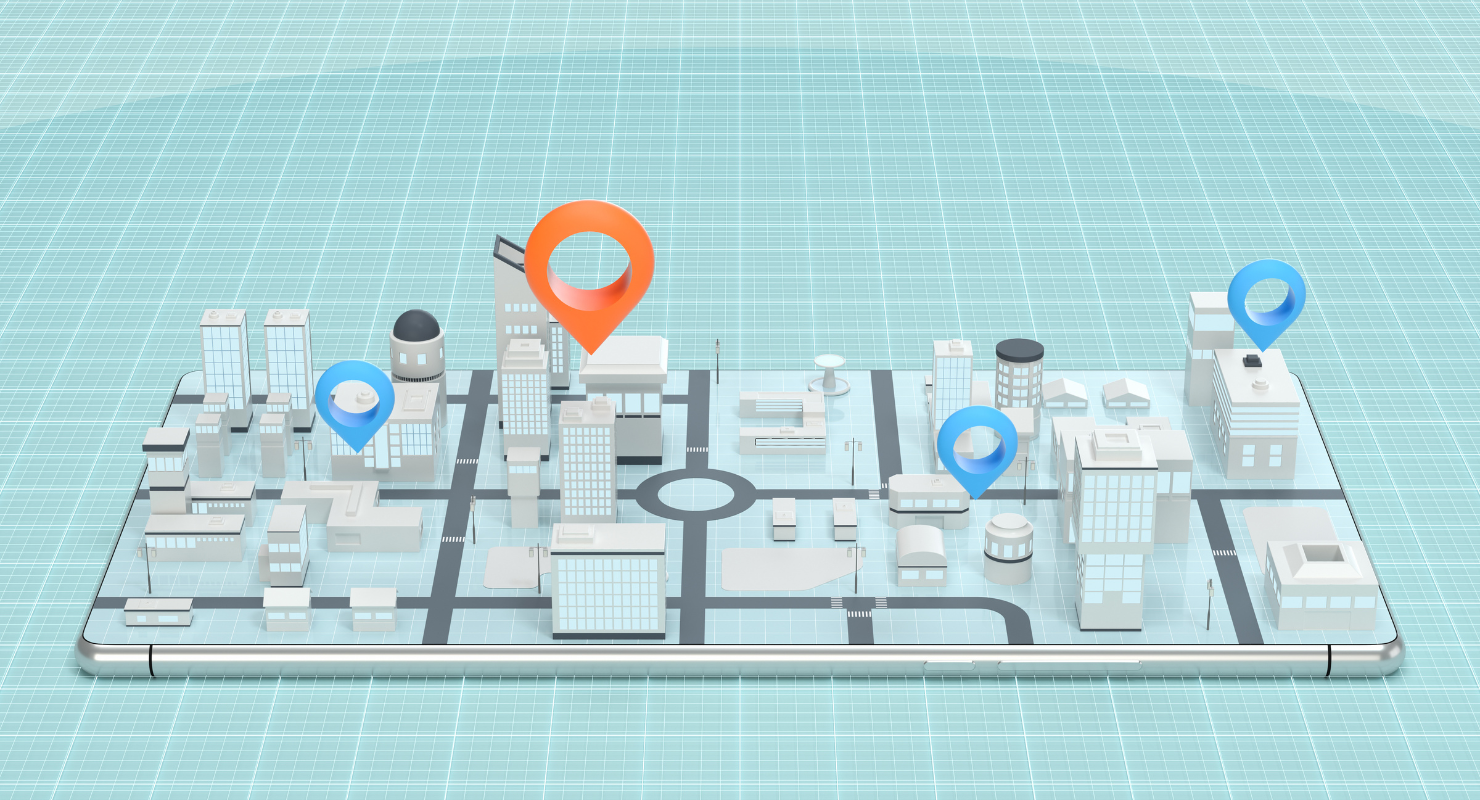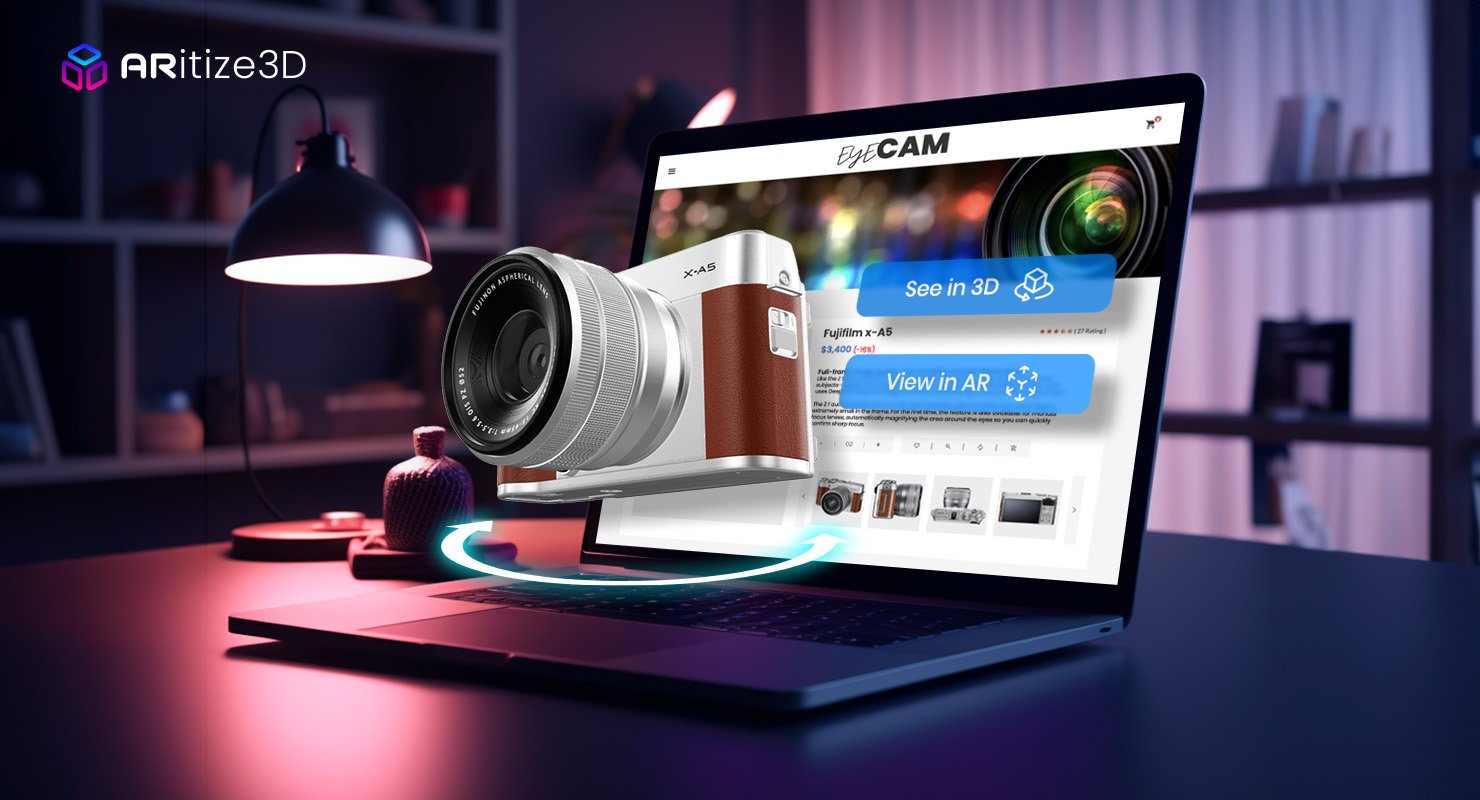Social media is one of the major domains in which the strong influence of augmented reality (AR) can be felt, and it has been significant, especially in the past few years. The world's most widely used social media platforms, Facebook, Instagram, and Snapchat, appear to be impacted by AR, and new AR technologies are getting released regularly.
So, is augmented reality in social media the future? And what impact will it have on marketers and brands? In this blog, let us attempt to find answers to these highly relevant questions and see how beneficial augmented reality in social media has been for individuals and retail businesses.
How are 3D and Augmented Reality Used in Social Media?
Entering the realm of practical applications, introducing AR technology adds a digital layer to real-world experiences. This layer appeals to multiple senses, providing users a more holistic and engaging encounter with digital content. One notable manifestation of this is through augmented reality filters for faces, ubiquitous on platforms like Instagram and Snapchat. Beyond being tools for personal expression, these augmented reality filters offer a unique opportunity for brands to interact with their audience. Users, drawn to the playful alteration of their appearance, become inadvertent brand ambassadors as they share these experiences in their stories, news feeds, or direct messages. The interactive nature of augmented reality sets them apart from traditional social media ads, fostering increased user engagement and sharing.
For instance, Snapchat skillfully uses this potential and facilitates content sharing on the network. Following the development of the image messaging app, it decided to move forward with its AR game, Snappables, which uses touch, motion, and facial expressions to increase score. For further engagement, users may even forward those images to their friends. The platform has gained popularity due to the users' imaginative and enchanting experience, and about 200 million people actively utilize augmented reality on Snapchat every day, according to a survey by Deloitte Digital and Snap Inc.
To discover how 3D products are transforming eCommerce, please see - Revolutionizing eCommerce: The Power of 3D Product Visualization.
What is The Future Of AR and Social Media in Marketing?
The integration of augmented reality into the fabric of social media raises intriguing questions about its potential dominance in the future and its consequential impact on brands. As AR continues to evolve, whether it will take over social media becomes not just a hypothetical consideration but a plausible scenario with far-reaching implications. In the future, will AR and social media rule the world of marketing and impact brands? Let's find out.
Dominance in Social Media
The trajectory of AR's growth hints at a future where it may take center stage in social media. The immersive and interactive nature of AR experiences aligns with the evolving preferences of digital users. If this trend persists, we might witness a paradigm shift where AR becomes the norm rather than the exception in social media interactions. Users, driven by a desire for richer and more engaging content, could increasingly gravitate towards platforms seamlessly integrating AR into their features.
Impact on Brands
For brands, this potential takeover holds both challenges and opportunities for brands—the interactive capabilities of AR present brands with a unique canvas to elevate their storytelling and marketing strategies. Instead of static advertisements, brands can create dynamic and immersive campaigns that resonate with users on a more profound level. This shift from traditional advertising to experiential marketing aligns with the digital age's demand for authenticity and personal connection.
Now, we can dive deeper into how AR impacts businesses and brands in detail. Some of the aspects include:
-
Enhanced Product Visualization
For businesses, especially those in the e-commerce sector, 3D modeling and AR are pivotal in revolutionizing product display. With AR, customers can virtually visualize furniture in their living spaces or see how a cosmetic product looks on their skin before purchasing. This enhanced product visualization enriches the customer experience and reduces uncertainty, leading to more confident purchasing decisions.
-
Interactive Brand Engagement
AR allows brands to create interactive and engaging promotional experiences. Brands can design AR campaigns that invite users to interact with virtual elements overlaid on the real world, fostering a deeper connection between the brand and its audience. Whether it's a gamified experience, an interactive storytelling campaign, or an AR-powered scavenger hunt, these immersive interactions increase brand recall and customer engagement.
-
Virtual Try-Ons and Fittings
3D modeling combined with AR technology enables virtual try-on experiences, particularly in the fashion and beauty industries. Customers can use AR applications that utilize 3D models of products to see how clothing items fit or how the makeup looks on their faces in real-time. This enhances the online shopping experience and reduces the likelihood of returns, contributing to improved customer satisfaction and operational efficiency for retailers.
-
Personalized Shopping Experiences
AR enables brands and retailers to personalize the shopping experience for individual consumers. By leveraging AR technology, brands can offer tailored recommendations based on user preferences, purchase history, and real-time interactions. This level of personalization enhances customer satisfaction, fosters brand loyalty, and increases the likelihood of repeat business.
-
Gamification and Interactive Campaigns
Brands are increasingly incorporating 3D elements and AR features in gamified and interactive campaigns. From scavenger hunts to interactive storytelling experiences, these campaigns leverage 3D modeling and AR to create virtual worlds that users can explore through their devices. This approach amplifies the shareability of the content, creating a wider reach.
-
In-Store Navigation and Assistance
AR can enhance the in-store experience for physical retailers by providing navigation assistance and additional product information. Customers can use AR apps to navigate through large stores, locate specific products, and access details such as pricing, reviews, and promotions. This offers a lot of benefits, like saving valuable time for the customers while they browse for products.
-
Online and Offline Integration
AR blurs the lines between online and offline retail experiences. Brands can seamlessly integrate AR features and 3D models of products into both e-commerce platforms and physical stores, to create a consistent and interconnected shopping journey. This integration facilitates a smoother transition between online and offline channels and provides customers with a cohesive brand experience across various touchpoints.
-
Social Media Ads
Advertisers are incorporating 3D modeling and AR elements into social media ads to create more attention-grabbing and interactive promotional content. This not only captures the audience's interest but also provides a unique and memorable advertising experience. Users are more likely to engage with ads that offer an immersive and interactive component, contributing to increased brand familiarity.
To discover how AI is revolutionizing customer experiences in the retail industry, please see AI in Retail Industry: Revolutionizing Customer Experiences.
Accessibility and Inclusivity Challenges
Amidst the exhilarating advancements, it's paramount to acknowledge the importance of ensuring that these technologies are accessible to everyone. Potential technological proficiency, hardware limitations, and inclusivity challenges must be addressed. Striking a balance between innovation and accessibility is key to ensuring that the transformative potential of 3D and AR in social media is experienced by a diverse and inclusive audience.
To bridge this gap, concerted efforts should be directed toward creating user-friendly interfaces, providing clear instructions, and ensuring compatibility with various devices. Moreover, considerations for individuals with disabilities should be integrated into the design process, fostering an environment where everyone, regardless of their abilities, can fully participate in and enjoy the immersive experiences offered by 3D and AR technologies.
Conclusion
Augmented reality in social media and its increasing dominance carries significant implications for brands. While it introduces new and exciting possibilities for marketing and engagement, brands must navigate challenges related to technology adoption, user accessibility, etc. The successful integration of AR into social media strategies could redefine how brands connect with their audience, offering a transformative pathway for those willing to embrace and adapt to this evolving digital landscape. As the future unfolds, brands that strategically leverage AR may find themselves at the forefront of a paradigm shift in the social media landscape.
About ARitize3D by Nextech3D.ai
Nextech3D.ai is a diversified augmented reality AI technology company that leverages proprietary artificial intelligence (AI) to create 3D experiences for the metaverse.
ARitize3D is a solution that turns 2D and CAD files into 3D models that can be viewed in augmented reality. This powerful technology has been used in many industries to enhance the user experience and provide better visualization.
Ready to explore the world of 3D advertising and AR marketing? Start by incorporating these strategies into your next campaign. Feel free to reach out if you have questions or need guidance. To learn more about ARitize3D, click here.







